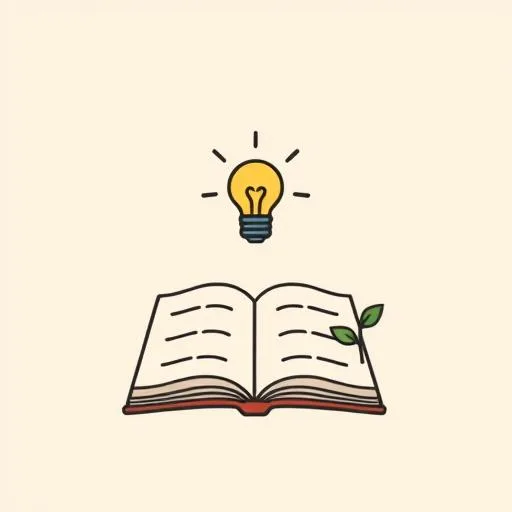
You know that moment when your child gasps, realizing the tablet’s chatbot knows their favorite animal? It’s pure wonder. But wonder without understanding? Let’s turn those ‘wow’ moments into real wisdom, shall we? Today’s kids aren’t just clicking buttons; they’re interacting with tools that learn, decide, and sometimes surprise us. And that’s why AI literacy—the ability to see behind the curtain—isn’t tomorrow’s homework. It’s today’s parenting heartbeat.
When ‘How’ Isn’t Enough Anymore: Why AI Literacy Matters

Remember when ‘digital literacy’ meant knowing which icon to tap? Now our kids swim in AI-powered worlds—from homework helpers to toys that adapt to their moods. But here’s the quiet shift: AI doesn’t just respond; it decides. And if children don’t learn to ask ‘Why did it choose this?’ or ‘Is this fair?’, they’re riding bikes with no training wheels. Studies show nearly half of young learners can’t spot when AI makes things up—that’s not a tech glitch, it’s a thinking gap. The fix begins when we move from ‘What can it do?’ to ‘Should we use it this way?’. Picture your 7-year-old pausing a game to wonder, ‘Why did the robot pick blue?’ That spark of questioning isn’t just cute—it’s the muscle we need to build. Because tech skills alone won’t help them navigate a world where algorithms shape choices; it’s the guts to ask why that turns passive users into thoughtful humans.
Schools: Where Wonder Grows (Not Rules)

Some classrooms reacted to AI like it’s a rogue kite—ground it fast. But hiding tech only makes the wind more tempting. Imagine instead a teacher showing how AI crafts a story, then asking kids: ‘Can it feel the character’s sadness? What’s missing here?’ This? It’s the heartbeat of AI literacy today, built on three pillars: Understand (how it works, like ‘It reads millions of books but doesn’t know loneliness’), Use (creatively, as in ‘Let’s design a garden for our class pet together’), and Evaluate (critically, asking ‘Why did it draw a firefighter only as a man? How might we fix that?’). Teachers don’t need to become coders—they need confidence to model healthy curiosity, saying, ‘Great idea from the app! Let’s see what our library book says too.’ When schools embrace this, AI becomes a springboard, not a threat. If you’re curious about classroom tools that boost wonder, dive deeper with Digital Promise’s AI Literacy Framework, designed to make classrooms wonder labs where humanness thrives.
Homegrown Literacy: Snack Time, Walks, and ‘What Ifs’

Here’s the joyful secret: raising AI-literate kids needs no fancy gadgets—just everyday magic. At our table, whether it’s kimchi jjigae or grilled cheese, questions fly freely. When the smart speaker suggests pancakes at breakfast, laugh and ask: ‘I wonder how it knew we like syrup? Did it eavesdrop?’ (You’ll get giggles, but also curious minds.) On a park stroll, point to streetlights ‘deciding’ when to glow: ‘Who should train those lights? What would happen if they got confused?’ These aren’t quizzes—they’re seeds of critical thinking planted during ordinary moments. Balance is key: swap ‘You’ve been on that too long’ with ‘What surprised you in that app today?’ Then pair it with unplugged joy—building forts from cardboard or singing made-up songs no algorithm could replicate. When your child shares an AI-drawn picture, try: ‘Do the clouds look fluffy? What would you add?’ Suddenly, they’re creators, not just consumers. Let them ‘teach’ you how a tool works—you’ll both chuckle at its stumbles, and they’ll feel empowered. After all, the best lessons bloom where curiosity meets coffee-table chatter.
The Unbeatable Human Edge: Why Critical Thinking and AI Literacy Go Hand-in-Hand

At its heart, AI literacy isn’t about machines—it’s about nurturing what no app can replicate. That hug when they’re scared? The pride in their eyes building a tower without instructions? That’s the irreplaceable core. Tech skills alone risk raising kids who know how to prompt AI but forget how to prompt their own imagination. But weave in ethics early—like asking, ‘Should we share this story to help someone feel less lonely?’—and something beautiful happens: tools serve compassion. Schools must champion robust curricula, absolutely. But as parents, we’re the keepers of balance—carving spaces where ‘useless’ play thrives: mud kitchens, read-aloud nooks, cloud-watching afternoons. In those moments, kids learn resilience, connection, the art of being present. That’s the ultimate literacy. Because the future won’t be shaped by those who master algorithms—it’ll be built by humans who remember why their own heartbeat matters most.
Source: AI Literacy Is The New Digital Literacy: What Schools Should Teach, Elearning Industry, 2025/09/06
